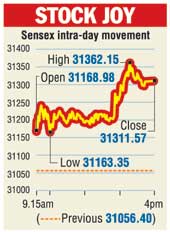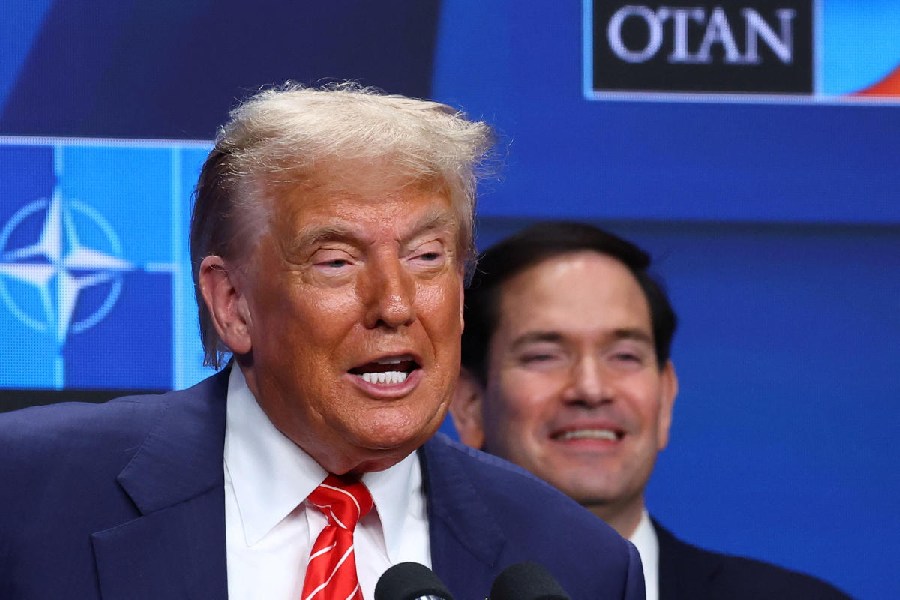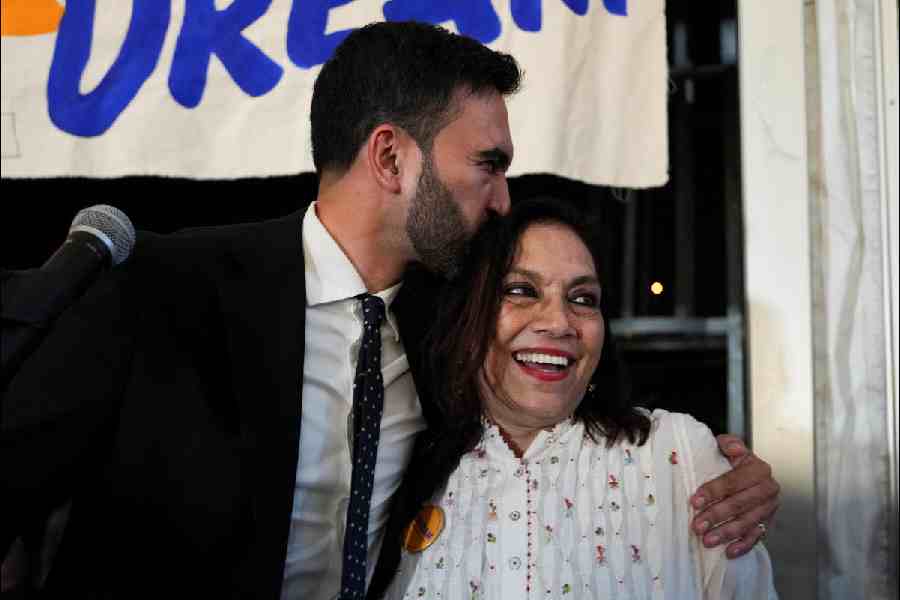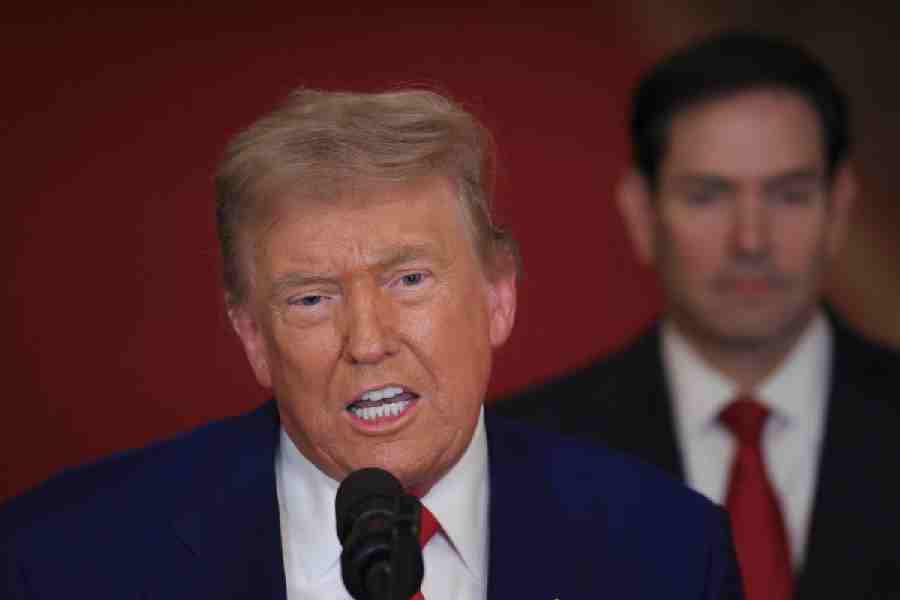
Kenneth J. Arrow, one of the most brilliant economic minds of the 20th century and, at 51, the youngest economist ever to win a Nobel, died on Tuesday at his home in Palo Alto, California. He was 95.
His son David confirmed the death.
Paul A. Samuelson, the first American to win the Nobel Memorial Prize in Economic Science, called Arrow "the most important theorist of the 20th century in economics".
Arrow - a member of an extended family of distinguished economists, including Samuelson and Lawrence H. Summers, the former treasury secretary and adviser to President Barack Obama - generated work that was technically forbidding even to mathematically oriented colleagues.
But over the decades, economists have learned to apply his ideas to the modern design of insurance products, financial securities, employment contracts and much more.
Markets & majorities
The backdrop for Arrow's influential early work was the centuries-long recognition that majority voting can produce arbitrary outcomes.
In search of non-arbitrary outcomes, social scientists proffered different ways to conduct votes.
But no voting system, however cleverly designed, resolved the problems associated with majority voting.
In a theorem of stunning generality, Arrow proved that no system of majority voting worked satisfactorily according to a carefully articulated definition of "satisfactory" (which social scientists generally accept).
What Arrow proved in his book "Social Choice and Individual Values" (1951) was far more sweeping. Not only would majority-voting rules prove unsatisfactory; so, too, would non-voting systems of making social choices if, as was fundamental to his way of thinking, those choices were based on the preferences of the individuals making up the society. (Arrow's rules did not allow for dictators)
The Arrow "impossibility theorem" ricocheted around the social sciences, noteworthy for its use of abstract mathematical concepts to generate a conclusion of sweeping applicability.
Arrow's research opened the academic field of social choice - a literature that ranges from countries picking presidents to corporate boards picking business strategies.
Arrow's next major contributions, for which he shared the 1972 Nobel Memorial Prize in Economic Science with British economist John R. Hicks, were published later in the 1950s. They took a bird's-eye, "general equilibrium" view of market economies, setting out equations to capture the interplay between consumers and producers.
The basic equations had been set out a half-century earlier by the French economist Leon Walras. But Arrow and his co-authors extended the Walrasian system to capture important complexities, like the fact that markets exist well into the future, posing risk for consumers and producers.
Arrow proved that their system of equations mathematically cohere: Prices exist that bring all markets into simultaneous equilibrium (whereby every item produced at the equilibrium price would be voluntarily purchased). And market competition puts society's resources to good use: Competitive markets are efficient, in the language of economists.
Arrow's theorems set out the precise conditions under which Adam Smith's famous conjecture in "The Wealth of Nations" holds true: that the "invisible hand" of market competition among self-serving individuals serves society well.
Relevant for decades
As was true of his earlier work on social choice, the magnitude of Arrow's theoretical insight was staggering. But, he made clear, his powerful conclusions about the workings of competitive markets held true only under ideal - that is to say, unrealistic - assumptions.
The mathematics behind the general equilibrium proofs of Arrow and his co-authors were daunting. Few economists mastered the details. But Franklin M. Fisher, who taught graduate courses on general equilibrium at the Massachusetts Institute of Technology, acknowledged in a 2013 interview with The New York Times that all academic economists were in Arrow's intellectual debt.
His later research translated common-sense ideas into elegant mathematics. Once the ideas were translated, other economists could extend them in unanticipated directions.
Take "learning by doing," a notion that Arrow examined in the early 1960s. The basic idea is straightforward: The more that a company produces, the smarter it gets. Decades later, economists incorporated this idea into sophisticated theories of "endogenous growth," which have a country's rate of economic growth depending on internal policies that promote innovation and education - the very forces that Arrow's writings anticipated.
Arrow also created mathematical concepts by which economists could measure and analyse risk. William F. Sharpe, who won a Nobel in 1990 for analysing the relationship between financial risk and return, credited Arrow with helping to formulate the basis for modern theories of financial investment and corporate finance.
Arrow anticipated the modern analysis of markets in which buyers and sellers do not share accurate information (now known as markets with asymmetric information). In a strikingly prescient article published in the early 1960s, he teased apart the complexities that asymmetric information creates in the market for health insurance. He pointed to incentives for patients and their physicians to agree to medical procedures of questionable value when a third party, the insurer, pays the bills.
Arrow's work spawned the modern treatment of "moral hazard", whereby the fact of the purchase of insurance systematically affects the behaviour of the parties to the contract.
The problems that Arrow flagged a half-century ago figured prominently in the design of the Affordable Care Act, President Barack Obama's 2010 health care legislation, including its controversial "individual mandate", which required everyone to buy coverage whether they expected to need medical care or not.
Joseph Stiglitz, who won the Nobel in 2001 for formalising the study of markets with incomplete information, traces his work to Arrow's initial forays.
The upshot? The theorist who in the 1950s proved that perfectly competitive markets could exist as a matter of mathematical logic spent much of the rest of his career showing how far short of perfection actual markets fall.
Lifetime of learning
Kenneth Joseph Arrow was born on August 23, 1921, in New York City. After graduating from Townsend Harris High School in Manhattan, he raced through City College, finishing with a bachelor's degree in social science and in mathematics.
He did his graduate work at Columbia University, interrupting it to serve as a weather officer, rising to captain, in the Army Air Corps during World War II. His first published paper, "On the Optimal Use of Winds for Flight Planning," drew on this experience.
Early in his career he worked at the RAND Corporation, the research and development organisation in Santa Monica, Calif., in what he described as "the heady days of emerging game theory and mathematical programming."
Arrow spent the bulk of his career at Stanford University, except for a teaching stint at Harvard from 1968 to 1979. He also served briefly on the staff of President John F. Kennedy's council of economic advisers.
He retired from Stanford in 1991 but continued to accept short-term appointments in Europe and to serve on the external faculty and the science board of the Santa Fe Institute, a research centre in New Mexico focused on the interplay of the social and physical sciences.
He led the American Economic Association, served on the Intergovernmental Panel on Climate Change and, in 2004, was awarded the National Medal of Science, the nation's highest scientific honour, presented in 2006 by President George W. Bush.
"His politics are liberal, definitely," said Robert M. Solow, a longtime friend and fellow Nobel laureate in economics. "With other people, this might rub the right half of the economics profession the wrong way, but it doesn't with Kenneth."
Arrow was widely hailed as a polymath, possessing prodigious knowledge of subjects far removed from economics.
Eric Maskin, a Harvard economist and fellow Nobel winner, told of a good-natured conspiracy waged by junior faculty to get the better of Arrow, even if artificially. They all agreed to study the breeding habits of gray whales - a suitably abstruse topic - and gathered at an appointed date at a place where Arrow would be sure to visit.
When, as expected, he showed up, they were talking out loud about the theory by a marine biologist - last name, Turner - which purported to explain how gray whales found the same breeding spot year after year. As Maskin recounted the story, "Ken was silent," and his junior colleagues amused themselves that they had for once bested their formidable professor.
Well, not so fast.
Before leaving, Arrow muttered, "But I thought that Turner's theory was entirely discredited by Spencer, who showed that the hypothesised homing mechanism couldn't possibly work."
NEW YORK TIMES NEWS SERVICE









